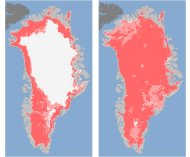Willie Nunn Sworn-In as FEMA Region 10 Administrator
- John Cornelison
- March 7, 2022
Table of Contents
 BOTHELL, Wash. - FEMA Region 10 welcomed its new Regional Administrator, Willie G. Nunn, following his appointment by President Joe Biden. Mr. Nunn was sworn in by FEMA Administrator Deanne Criswell at the regional office this morning.
BOTHELL, Wash. - FEMA Region 10 welcomed its new Regional Administrator, Willie G. Nunn, following his appointment by President Joe Biden. Mr. Nunn was sworn in by FEMA Administrator Deanne Criswell at the regional office this morning.
As the Regional Administrator, Mr. Nunn will lead and coordinate all activities in support of FEMA’s mission with the states of Alaska, Idaho, Oregon, and Washington, as well as the 271 federally recognized tribes within the region.
Mr. Nunn joined FEMA in June 2007 and has effectively managed disasters in all four states in Region 10 plus nine states across the country and two United States territories. He was certified as a Type 1 Federal Coordinating Officer (FCO) in June 2014. As an FCO, Mr. Nunn served as the representative of the President of the U.S., Secretary of the Department of Homeland Security, and FEMA Administrator during major disaster and emergency declarations.
 His previous roles within FEMA included serving as Assistant Director of the Office of Federal Disaster Coordination, as Lead Field Coordinator for FEMA Region 10, and as an FCO Type 1 Field Leader Supervisor for FEMA Regions 2, 8, 9, and 10. He also served as Acting Deputy Assistant Administrator for Insurance, Acting Deputy Assistant Administrator for the Field Operations Directorate, and Senior Advisor for the Operational Coordination Division.
His previous roles within FEMA included serving as Assistant Director of the Office of Federal Disaster Coordination, as Lead Field Coordinator for FEMA Region 10, and as an FCO Type 1 Field Leader Supervisor for FEMA Regions 2, 8, 9, and 10. He also served as Acting Deputy Assistant Administrator for Insurance, Acting Deputy Assistant Administrator for the Field Operations Directorate, and Senior Advisor for the Operational Coordination Division.
Prior to joining FEMA, Mr. Nunn was on active duty for over 26 years in the U.S. Air Force, retiring as a Colonel. His assignments included two command tours and two combat tours in Operations Enduring Freedom in 2002 in Afghanistan and Iraqi Freedom in 2003.
Mr. Nunn earned a Bachelor of Arts in History from the University of Alabama-Birmingham and a Master of Public Administration from the University of Oklahoma. He and his wife Sylvia have three children, Sacha, Adam, and Alene.
 According to an interesting
According to an interesting 